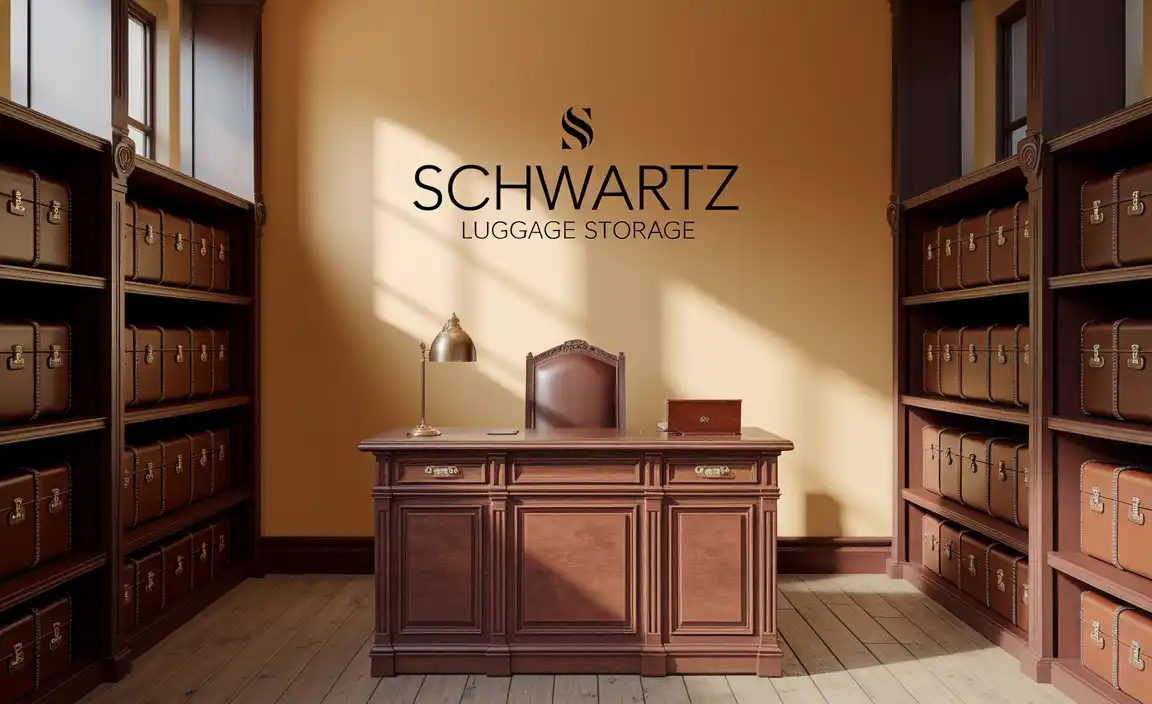Barcelona on a budget is totally achievable! This guide offers essential tips for saving money on flights, accommodation, food, transport, and attractions. Discover how to experience the magic of Barcelona without breaking the bank, ensuring a comfortable and stress-free trip for every traveler.
Dreaming of Gaudí’s whimsical architecture and the vibrant energy of Las Ramblas, but worried about your wallet? Traveling to a city like Barcelona doesn’t have to be an expensive affair. Many find the cost of visiting popular European destinations a bit daunting. But with a few smart strategies, you can unlock the magic of this Catalan capital without overspending. This guide is your roadmap to experiencing the best of Barcelona comfortably and affordably. We’ll walk you through simple, practical steps to save money at every turn, ensuring your journey is as smooth as it is budget-friendly. Get ready to explore Barcelona with confidence!
Your Barcelona Budget Travel Guide: Essential Tips
Barcelona is a city that truly has it all: stunning architecture, delicious food, beautiful beaches, and a lively culture. Fortunately, it’s also a city that can be explored on a budget. As a seasoned traveler, both solo and with family, I’ve learned that comfort and practicality are key, especially when managing travel with children or personal needs like ensuring easy access to adult or child diapers for extended travel days. This guide is designed to help you navigate Barcelona like a pro, keeping your expenses in check and your travel experience enjoyable from start to finish. We’ll cover everything from getting there to getting around, eating well, and seeing the sights without draining your bank account.
My goal is to provide you with real-life solutions that make traveling to Barcelona not just possible, but enjoyable and stress-free. We’ll focus on smart choices that enhance your comfort and confidence, ensuring you can focus on making unforgettable memories.
1. Smart Flight Booking: Your First Step to Savings
The biggest chunk of your travel budget often goes to flights. Booking strategically can make a significant difference.
- Be Flexible with Dates: If possible, avoid peak travel seasons like summer and major holidays. Shoulder seasons (spring and autumn) often offer lower prices and fewer crowds. Traveling mid-week can also be cheaper than flying on weekends.
- Book in Advance: Generally, booking flights 2-3 months ahead of your travel date yields the best prices. However, keep an eye on deals year-round.
- Consider Budget Airlines: Airlines like Ryanair, Vueling, and EasyJet fly into Barcelona El Prat Airport (BCN) and sometimes nearby smaller airports. Be mindful of their baggage restrictions and additional fees, which can add up. Always read the fine print!
- Use Flight Comparison Websites: Tools like Skyscanner, Google Flights, and Kayak allow you to compare prices across multiple airlines and dates. Set up price alerts to be notified when fares drop.
- Fly into Nearby Airports: Sometimes, flying into Reus Airport (REU) or Girona Airport (GRO) and taking a bus or train to Barcelona can be cheaper. Research transfer costs and times to ensure it’s truly a saving. Companies like Barcelona Bus offer convenient transfers.
2. Affordable Accommodation: Rest Your Head Without Breaking the Bank
Where you stay significantly impacts both your budget and your experience. Barcelona offers diverse options for every budget.
- Hostels: A classic budget option, hostels offer dorm beds or private rooms and a great atmosphere for meeting fellow travelers. Look for hostels with good reviews, kitchen facilities (to save on food), and convenient locations.
- Budget Hotels & Guesthouses: Many small hotels and “pensiones” (guesthouses) offer clean, comfortable rooms at lower prices than larger hotels. Locations slightly outside the absolute city center but near metro stations can be a good compromise.
- Apartment Rentals: Platforms like Airbnb and Vrbo can be great value, especially for families or longer stays. Having a kitchen allows you to prepare meals, a major money-saver. Look for places with good reviews regarding cleanliness and safety.
- Location, Location, Location: While staying in the heart of the Gothic Quarter might be romantic, it’s often more expensive. Consider neighborhoods like Gràcia, Eixample (further from the center), Poble Sec, or Sant Antoni. These areas are well-connected by public transport and offer a more local vibe.
Choosing the Right Neighborhood for Your Budget Stay
When selecting accommodation, think about your primary interests and how you plan to get around. Here’s a quick comparison:
| Neighborhood | Budget Friendliness | Vibe | Pros | Cons |
|---|---|---|---|---|
| Gothic Quarter / El Born | $$ | Historic, bustling, touristy | Central, close to attractions, charming streets | Can be noisy, more expensive |
| Eixample | $$ – $$$ | Elegant, wide avenues, Gaudí architecture | Well-organized, great shopping, some quieter streets | Can be pricier, farther from some attractions |
| Gràcia | $$ | Bohemian, village-like, local feel | Plazas for relaxing, independent shops, great food | Slightly less central, hilly |
| Poble Sec / Sant Antoni | $ – $$ | Emerging, authentic, lively nightlife | Affordable tapas bars, good transport links, local markets | Can be noisy with nightlife, less picturesque than other areas |
3. Savvy Dining: Enjoying Catalan Cuisine Affordably
Food is a highlight of any trip to Barcelona. You don’t need to spend a fortune to savor its delicious flavors.
- Embrace the “Menú del Día”: This is your secret weapon for cheap and delicious lunches. Most restaurants offer a fixed-price lunch menu on weekdays, typically including a starter, main course, dessert, and a drink (wine, water, or soda) for €10-€15. Look for signs outside restaurants advertising “Menú del Día.”
- Tapas Like a Local: Instead of full meals, graze on tapas. Many bars offer affordable small plates. A few tapas and a drink can make a satisfying and budget-friendly meal. Look for “tapas bars” away from the main tourist drags for better prices and authenticity.
- Visit Local Markets: Barcelona’s markets, like La Boqueria (though touristy, it’s still worth a visit for the sights!) or Mercat de Sant Antoni, are fantastic places to buy fresh produce, bread, cheese, and other snacks. You can assemble a delightful picnic to enjoy in a park.
- Cook Some Meals: If your accommodation has a kitchen, take advantage of it! Shopping at local supermarkets (like Mercadona, Carrefour, or Lidl) and preparing breakfast or dinner can save you a significant amount of money everyday.
- Avoid Tourist Traps: Restaurants right on Las Ramblas or overlooking major attractions often have inflated prices and lower quality food. Wander a few streets away to find more local and affordable eateries.
- Drink Tap Water: While bottled water is readily available, tap water in Barcelona is safe to drink. Carry a reusable water bottle and refill it to save money and reduce plastic waste.
4. Getting Around Barcelona: Efficient and Economical Transport
Barcelona has an excellent public transportation system, making it easy to explore without a car.
- Walk as Much as Possible: Barcelona is a very walkable city, especially in its central neighborhoods. Walking is the best way to discover hidden gems and soak in the atmosphere.
- Metro is Your Best Friend: The Barcelona Metro is efficient, clean, and covers most of the city. A single ticket is relatively expensive, but purchasing a multi-trip card is much more cost-effective.
- T-Casual Card: This is the most popular and recommended option for budget travelers. It’s a personal card valid for 10 journeys on the metro, buses, trams, and local trains within Zone 1 (which covers most tourist attractions). It can be used by only one person at a time.
- Hola Barcelona Travel Card: If you plan on using public transport extensively, this unlimited travel card (available for 2, 3, 4, or 5 days) might be worthwhile. However, for most budget travelers exploring at a moderate pace, the T-Casual is usually more economical.
- Buses: Barcelona’s bus network is extensive and useful for reaching areas not directly served by the metro. T-Casual cards are valid on buses too.
- Taxis and Ride-Sharing: Use sparingly. While convenient, they are the most expensive option for getting around.
| Transportation Option | Cost (Approx. Single Journey in Zone 1) | Best For | Notes |
|---|---|---|---|
| Single Metro Ticket (T-1) | €2.55 | Very occasional traveler | Expensive for multiple trips. |
| T-Casual Card (10 Journeys) | €12.15 (for first card, subsequent cards might have a small fee) | Most budget travelers | Personal use only, valid for metro, bus, tram, local trains (Zone 1). |
| Hola Barcelona Travel Card (72 hours) | €24.20 | Heavy public transport users | Unlimited travel on metro, bus, tram, FGC, Rodalies (Zone 1). |
| Walking | Free! | Exploring city center, discovering hidden gems | Excellent exercise and the best way to see detail. |
5. Free and Cheap Attractions: Experience Barcelona’s Wonders
You don’t need to spend a fortune to see the best of Barcelona. Many of its most captivating sights are free or low-cost.
- Stroll Through Parks: Park Güell has free areas to explore, though the monumental zone requires a ticket. Parc de la Ciutadella offers beautiful gardens, a lake to rent rowboats on, and is home to the Barcelona Zoo (paid entry). The Juan Antonio Samaranch Olympic and Sports Museum is also located here.
- Wander the Gothic Quarter and El Born: Get lost in the maze of narrow streets, admire the architecture, stumble upon charming squares, and visit the exterior of the Barcelona Cathedral. It’s an adventure in itself.
- La Sagrada Familia (Exterior): While going inside Sagrada Familia is a must-do for many (and worth the ticket price if your budget allows a splurge), its exterior is breathtaking and can be enjoyed for free from various viewpoints around the city.
- Magic Fountain of Montjuïc: Check the schedule for the spectacular light, water, and music show at the Magic Fountain. It’s a magical experience and completely free.
- Barceloneta Beach: Spend a relaxing day by the Mediterranean Sea. It’s the perfect spot for a budget-friendly beach day, complete with sunshine and sea breeze.
- Visit Free Museums: Some museums offer free admission on specific days or times. For example, some city-run museums are free every Sunday afternoon. Check the official websites of museums like the Museu d’Història de Barcelona (MUHBA) or the Picasso Museum.
- Explore Las Ramblas: While known for tourist traps, the sheer spectacle of Las Ramblas itself, with its street performers, flower stalls, and bustling atmosphere, is an experience you can enjoy without spending a euro.
- Go for a Hike in Montserrat (Day Trip): While not strictly in Barcelona, Montserrat offers stunning mountain scenery and a monastery. You can hike many trails for free, though getting there requires a transport ticket from Catalana Tour or similar providers, or by train via Renfe.
6. Budgeting for Barcelona: Essential Planning
A good budget plan prevents overspending and unwanted financial stress. Here’s how to structure yours.
- Set a Daily Budget: Decide on a maximum amount you’re willing to spend per day on food, activities, and local transport.
- Prioritize Splurges: Decide which attractions or experiences are most important to you. Is it entry to Sagrada Familia, a specific museum, or a fantastic flamenco show? Allocate a portion of your budget for these.
- Track Your Spending: Use a notes app on your phone, a small notebook, or a budgeting app to keep track of what you spend each day. This helps you stay accountable.
- Carry Cash for Small Purchases: While cards are widely accepted, having some cash for small snacks, market purchases, or tips can be convenient.
- Look for Free Walking Tours: Many companies offer “free” walking tours of neighborhoods like the Gothic Quarter or El Born. While the tour itself is free, it’s customary and highly recommended to tip your guide based on your satisfaction. This is a great way to get an overview of the city.
7. Comfort and Convenience: Traveling with Peace of Mind
As a lifestyle guide, I always emphasize comfort and reliability, especially when dealing with personal needs during travel. For instance, ensuring you have appropriate adult or child diapers can make a world of difference on long travel days or when local supplies are hard to find or unfamiliar.
- Pack Smart: Bring essentials you might have trouble finding or that are expensive abroad. This could include specific medications, toiletries, and yes, any necessary adult or child diapers. Websites like Adult Incontinence or similar specialized online stores can help you source these discreetly before your trip.
- Reusable Items: Carry a reusable water bottle, a tote bag for shopping, and perhaps some reusable cutlery if you plan on having many picnics.
- Comfortable Shoes: You’ll be doing a lot of walking! Prioritize comfortable, broken-in shoes.
- Download Offline Maps: Use apps like Google Maps to download offline maps of Barcelona. This helps you navigate without using mobile data, saving money and ensuring you don’t get lost.
- Learn Basic Phrases: Knowing a few Catalan or Spanish phrases like “Hola” (Hello), “Gràcies/Gracias” (Thank you), “Si us plau/Por favor” (Please), and “Quant costa?” (How much does it cost?) can go a long way in interactions and may even lead to friendlier service.
Frequently Asked Questions (FAQ)
Q1: When is the cheapest time to visit Barcelona?
A1: The cheapest times are typically during the shoulder seasons: April-May (spring) and September-October (autumn). You’ll find lower prices for flights and accommodation, and fewer crowds compared to the peak summer months.
Q2: Is Barcelona an expensive city for tourists?
A2: Barcelona can be as expensive or as affordable as you make it. While some attractions and prime dining spots are pricey, diligent planning and opting for budget-friendly options can make it very accessible.
Q3: What’s the best way to get from Barcelona Airport (BCN) to the city center on a budget?
A3: The Aerobús is a popular and relatively inexpensive option, running frequently. Alternatively, you can take the R2 Nord train fromTerminal 2 (accessible by free shuttle bus from Terminal 1) for a slightly cheaper fare but with fewer stops in the center.
Q4: Are there any free attractions in Barcelona?
A4: Absolutely! You can enjoy many free attractions like walking through the Gothic Quarter, visiting Barceloneta Beach, watching the Magic Fountain show (check schedule), exploring parts of Park Güell, and admiring the exterior of Sagrada Familia.
Q5: How can I save money on food in Barcelona?
A5: Look for “Menú del Día” lunch specials, enjoy affordable tapas, shop at local markets for picnic supplies, and utilize any kitchen facilities in your accommodation. Avoid eating directly on major tourist streets.
Q6: Is it worth buying a Barcelona Card or Hola Barcelona Travel Card?
A6: It depends on your travel style. If you plan to visit many paid attractions and use public transport frequently, the Barcelona Card might offer savings. For pure transport, the Hola Barcelona Travel Card is good for unlimited rides. However, for most budget travelers focusing on free sights and moderate transport use, a T-Casual card for 10 journeys is usually the most economical choice.
Q7: What’s the best way for families to travel on a budget in Barcelona?




